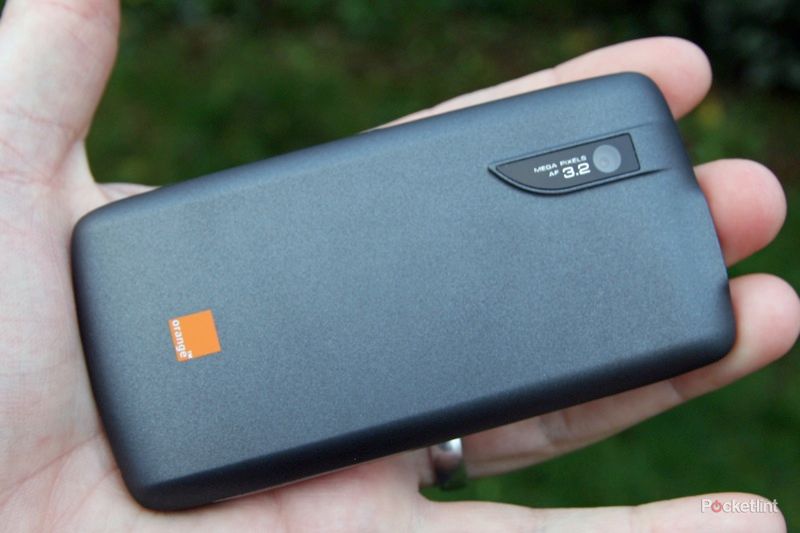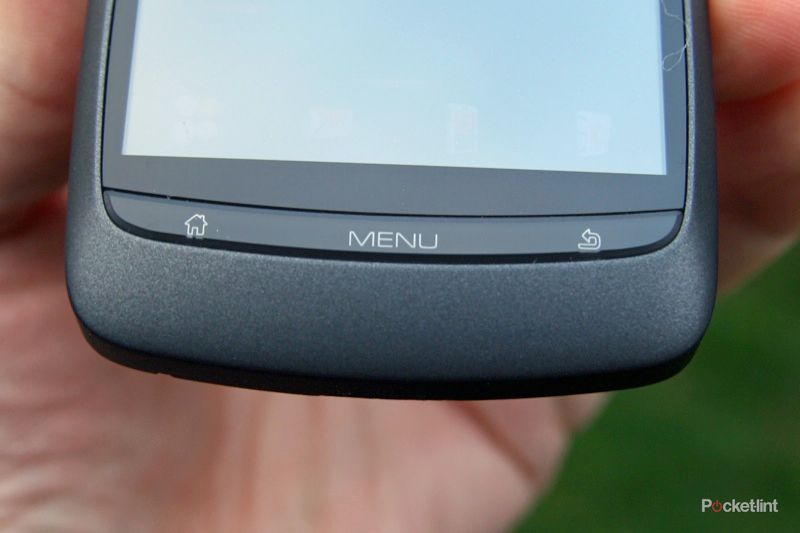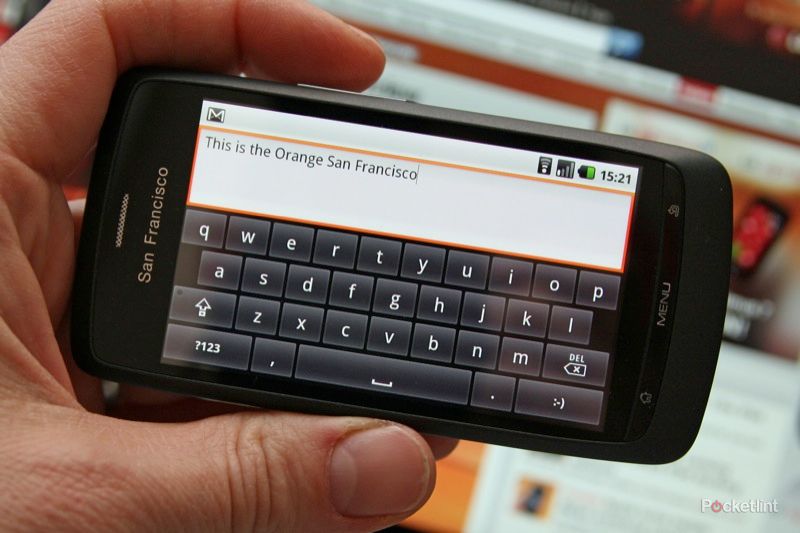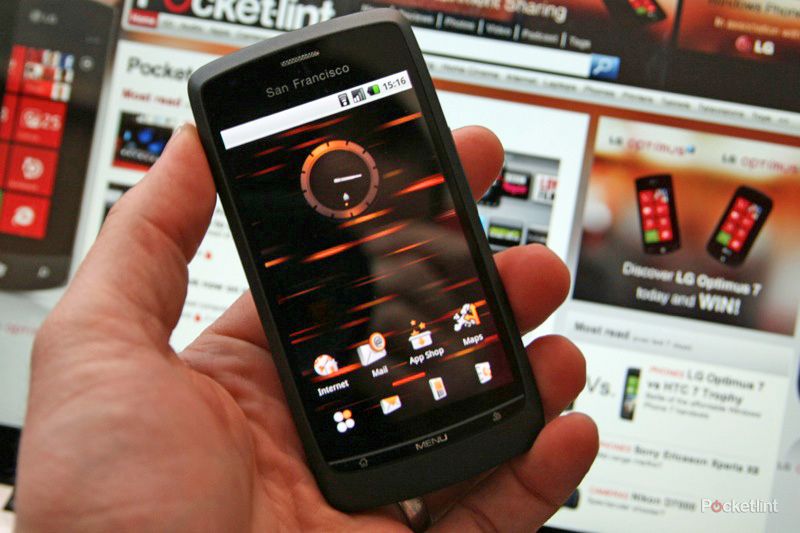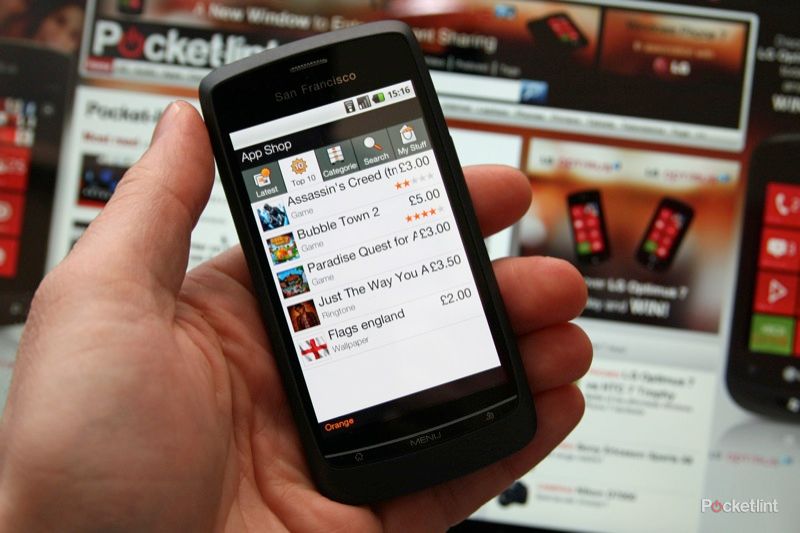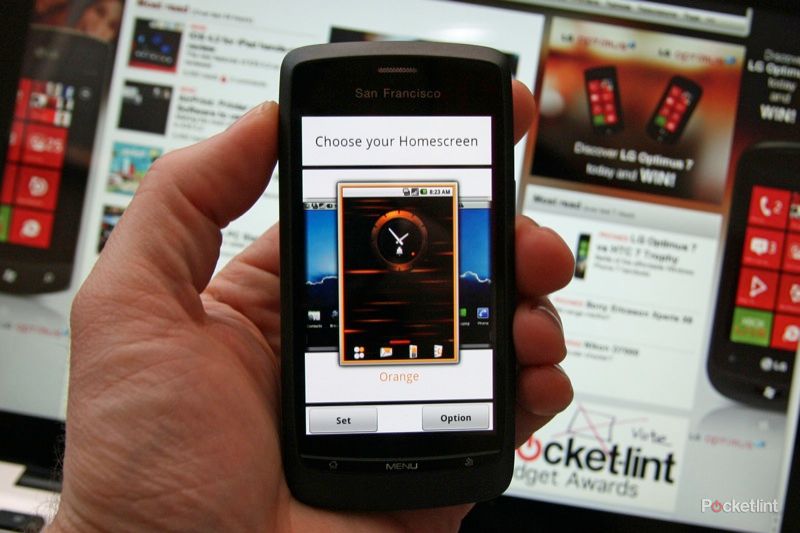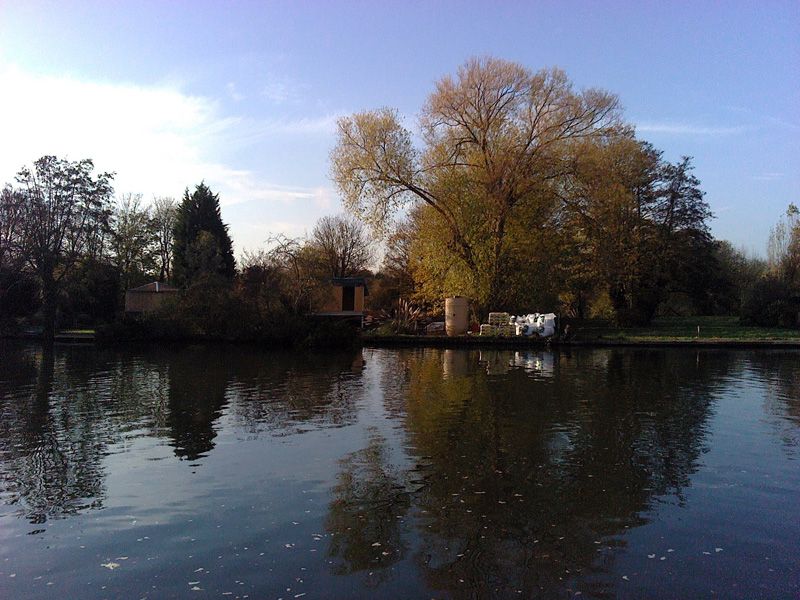The Orange San Francisco is the network’s adaptation of the ZTE Blade. It is a budget Android handset, offering up entry-level hardware specs but coming forward with a cracking display and offering Android 2.1, albeit with a heavy dose of Orange customisation by default.
Our quick take
The Orange San Francisco is something of a surprise package. Pitched at the entry level, it sets a new standard for displays, outstripping its rivals by a large margin. It isn’t a powerful handset, so isn’t as snappy as more expensive rivals, and you don’t get all the multimedia skills you do elsewhere. You get access to Android with plenty of features for a price that won’t break the bank, and given that you get a fully-featured 3G smartphone, it’s an enticing proposition.
There are a few bugs in the software leading to us experiencing some applications quitting and the Orange services need to be recognised so you can avoid them and find alternatives if you want more freedom. This is the biggest downside of this handset, so it is well worth checking what data you get with your package, which Orange services you actually need (if any) and digging out those apps from the Market that will get the most out of your phone.
Overall a great handset.
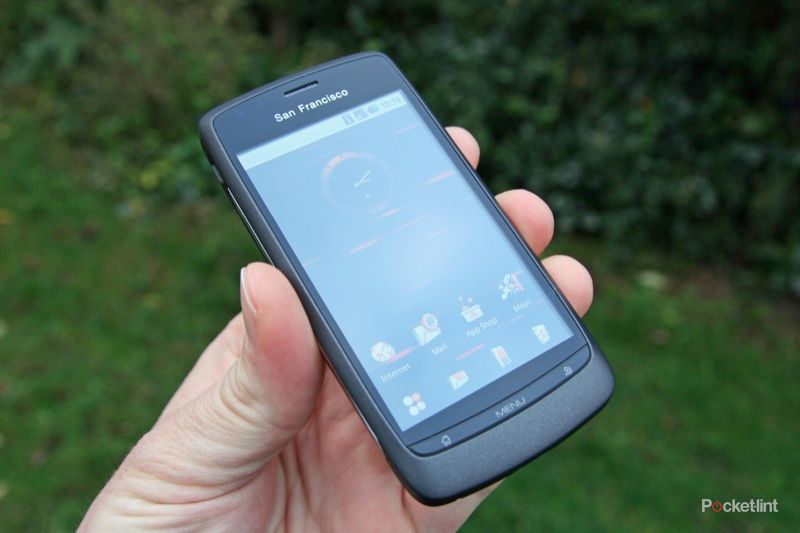
Orange San Francisco - 4.0 / 5
| FOR | AGAINST |
|---|---|
|
|
ZTE isn’t a company that has a high profile in the UK, but anyone who has an interest in mobile phones will have undoubtedly heard of the Chinese mobile phone giant. Orange has been producing its own-branded devices for many years (as have the other networks) and once HTC was an OEM supplier, just as ZTE is in this case. The Orange San Francisco is one of the most surprising devices of 2010, but could also mark the beginning of the rise of ZTE in Europe.
The name is something of a surprise too, as San Francisco doesn’t exactly trip off the tongue. It isn’t entirely random - if you remember Orange launched the abysmal Vegas handset last year, and now have Amsterdam, Rio, Miami and Rome on offer too. We do have to concede that there won’t be much scope for confusing it with the latest X or Z designated device, and that alone may well justify its name.
Befitting its budget status, the San Francisco is largely finished in plastic. This isn’t the sort of premium plastic finish you’ll find on some devices, like its competitor the LG Optimus One, and there is rather more creaking and bending than we’d like. However, as you can get this handset for £99 on pay as you go, you have to accept some degree of compromise.
Although the construction is easily bettered elsewhere, the San Francisco puts in a good showing for itself. The dimensions are tight, measuring just 116 x 56.5 x 11.8mm, making it amongst the thinnest of mobile phones out there. It weighs 130g, making it comfortably light, with the tactile finish making it feel secure in the hand.
You’ll find the regular Micro-USB and 3.5mm connections in place for charging, syncing and hooking up your headphones, and a volume rocker sits on the right-hand side. Other physical buttons fall into a slim bar across the bottom of the screen, offering home, menu and back. These buttons also suffer the budget affliction, being slightly uncomfortable as they click down below the level of the screen above, so they don’t have the sort of smooth action you’ll find on higher-spec devices.
We also found the backlighting of these buttons to be rather random. Often there would be nothing, occasionally they’d all light up and sometimes the back button would flash green or red as an alert, or to alert us to the charge status.
The screen is the real star of the show. Keeping pace with its high-end rivals, the 3.5-inch screen offers up a resolution of 800 x 480 pixels, that’s the same resolution as the HTC Desire HD and the Samsung Galaxy S, and given the screen size, you get a high 266ppi meaning that everything looks nice and sharp. It is incredibly vibrant too and puts lesser rivals in the shade: it out does the likes of the HTC Wildfire, the LG Optimus One, and Samsung Galaxy Europa and this is no minor point because with a phone of this type, much is governed by the experience of the screen.
Some rival devices only offer a resistive touchscreen display, whereas the Orange San Francisco is capacitive, offering up multi-touch “pinch” zooming in Google Maps and the browser. This is also a significant point, because so often we criticise budget devices for not offering this sort of experience. Orange seems to have hit the nail on the head here as it’s a refreshing change.
The touch response is great. The stock Android keyboard is fast enough to respond and the on-board accelerometer takes care of switching from portrait to landscape. In truth, the portrait on-screen QWERTY keyboard gives you just about enough space to use it without issue. Certainly we found it good enough to use for most tasks, only switching over to landscape for some serious email typing.
The Orange San Francisco runs Android 2.1, and as such misses some of the features the latest version of the Google mobile operating system offers. That includes the official avenue for Flash support via the Adobe app (however we did find that the Skyfire app served up some online video to step round this problem) but otherwise you get most of the goodness that Android has to offer.
That means you get easy integration with your Google account(s) syncing contacts, emails and calendars to your handset, and you get free navigation from Google Maps using the on-board GPS. Although you don’t get the sort of integration of social networks that HTC’s Sense user interface will offer, but you’ll find that native Android apps are starting to step in this direction anyway, for example the Twitter app offers to hook-up with your existing contacts to complete the circle, bring in their pictures and so on. Facebook is also offered for syncing via the contacts “add account” option, but we found it refused to work.
The Orange San Francisco also offers up the Android Market for you to sift through the rapidly growing selection of applications to download and get jiggy with. As such, the Orange San Francisco throws aside its Orange cape rather quickly, and although the network has preloaded some applications onto the phone, there is a whole world of apps waiting to be explored.
We often criticise Orange for going to town on its devices and essentially taking a decent handset and making it worse by tinkering and pushing its own services too heavily. It does run a custom skin over the top of Android, but it doesn’t differ too drastically from what you’d expect from Android - and it even offers an easy way to change the homepage. One oddity that we found was that the phone asked which homepage to use each time it was restarted if we weren’t using the Orange homepage, which is a huge irritation.
The Orange interface is okay, but the “launcher” is much more akin to native Android and we found it more pleasant. Whichever you choose, neither is far removed from the standard template of offering you several pages to litter with shortcuts and widgets (both Android and Orange supplied). The Orange homepage puts Orange’s services front and centre, but they are easily removed and replaced with alternatives if you prefer.
One perhaps misleading offering is Orange Email which will invite you to log in to your email account(s), and then tells you that actually this is a network service, rather than the default Android email service. So when setting up your phone tread with caution and make sure you’re plugging your email details into the service that is going to serve you best - if you use Gmail, when you log-in to your account on the phone you’ll be getting access to your associated services too, including the Gmail app, so it may meet all your needs.
You also get the familiar Your Orange and Orange Wednesdays apps, as well as an offering to backup your contacts - something you don’t really need to do if you’ve already thrown your lot in with Google. There is also an Orange App Shop offering which is rather strange. It offers to sell you content, but won’t work over Wi-Fi, instructing you to switch off Wi-Fi and use your 3G connection instead. Of course, you aren’t restricted to these services, as you could fork out for a subscription to Spotify for your music, or simply sync it with your existing collection - such is the freedom of Android.
For the most part we found that the San Francisco worked well enough. It isn’t a hugely powerful phone, the 600MHz processor tackling most things, but lacking the punch and immediacy that higher-spec devices offer. It also suffers slightly when you push it to carry out more demanding tasks - playing Angry Birds was fine, but the experience is much less smooth than on more powerful devices which offer better performance overall.
We did experience a few bugs with the San Francisco. We had the occasional restart and some applications quitting out of the blue. There was also a noticeable pause when emails arrived, and the keytones on the dial-pad didn’t seem to be able to keep pace with our fingers when dialling. Fortunately they can be switched off. The most common error we had was the Orange homepage quitting and having to restart, which happened regularly, although wasn’t a major drawback. This suggests there are some bugs lurking in the software, but we can’t discern whether these will be ironed out by Orange - fingers crossed they will.
Calling on the San Francisco is comfortable enough, the tapered top edge offering up a neat fit against your ear. The external speaker is adequate rather than exceptional. Of course we’d always suggest using your headphones rather than the external speaker for watching movies or listening to music: the bundled headphones are easily bettered with third-party alternatives, something that will make the music experience much better. The music player is the default Android player.
In terms of storage, the Orange San Francisco offers up 150MB of internal memory, but comes with a 2GB microSD card bundled in the box. If you want to carry around a lot of content, then this is easily upgraded to something of a larger capacity, up to 32GB is supported.
With a cracking screen you might be looking at using your San Fran to watch movies. This works fine as long as you don’t try to step into the realms of HD. Unlike some high-end devices it won’t play higher resolution videos. The native video support is a little basic, only really interested in MPEG4 videos, with Orange again offering “more videos” through its player, then taking you through to a web front end to sell you content. Free players from the Android Market will offer wider format support, but again, there isn’t the power to play your high res videos at an acceptable frame rate.
Video overall isn’t the San Francisco’s strong point. The 3.2-megapixel camera on the back is a disappointment, only offering up rudimentary 352 x 288 (CIF) capture at jerky 12fps. There is no flash (although that’s not uncommon) and the low light performance is terribly noisy on both the video and the camera. The camera, in daylight, gives average performance boosted by its autofocus offering, which some budget phones lack.
As with other touchscreen devices, the Orange San Francisco suffers from a battery point of view. In testing we found ourselves charging it every night, although the 1250mAh battery does last slightly longer than on those devices where you are asking more.
To recap
Overall a great handset.

